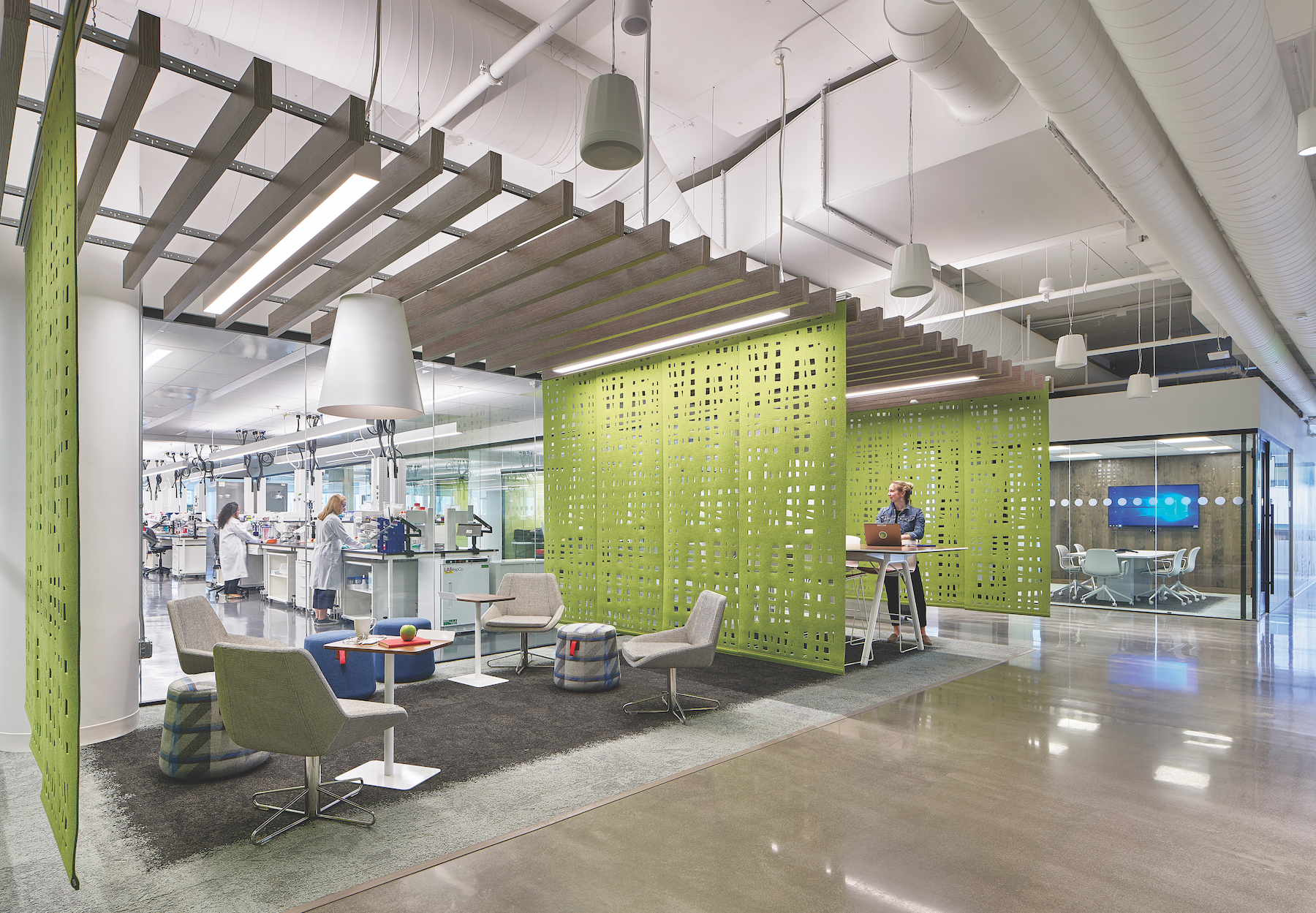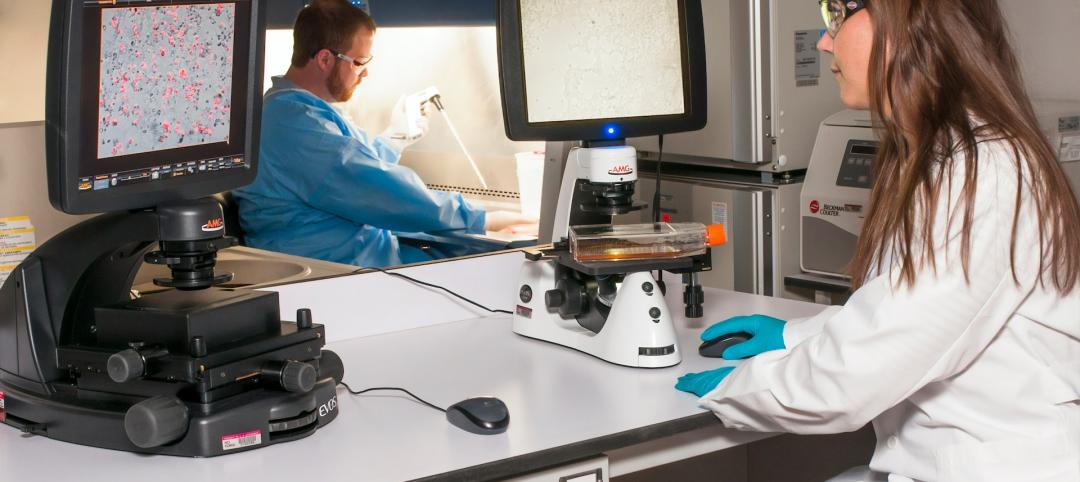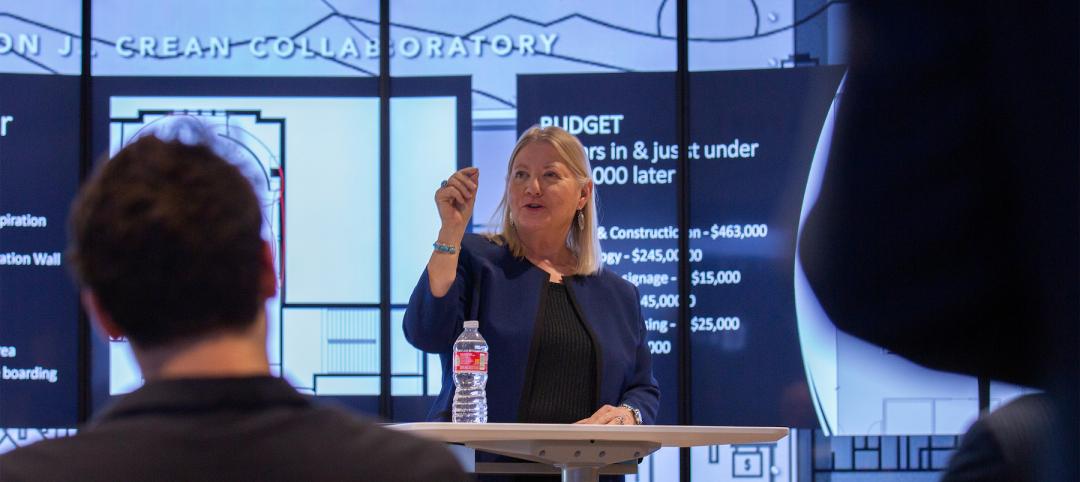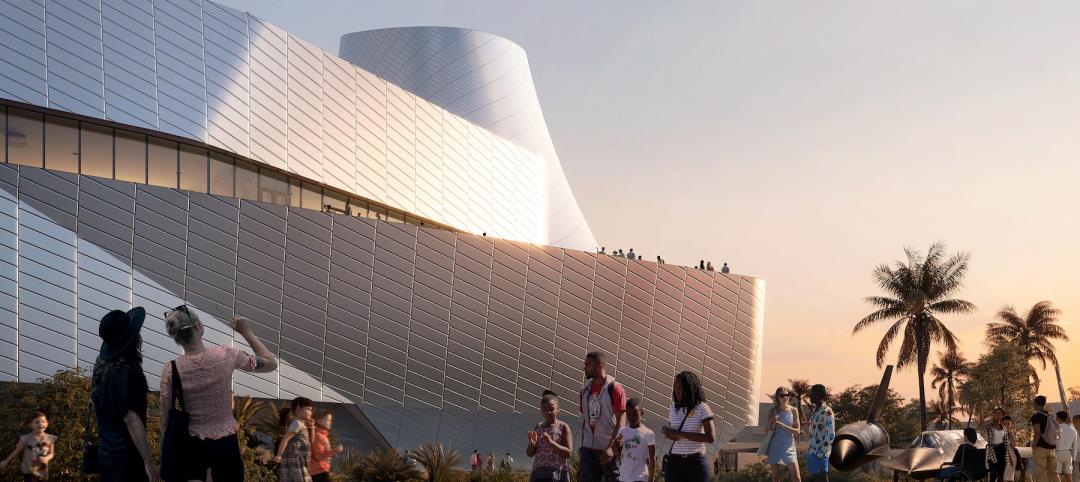Most AEC executives would probably agree with Greg Peele, Skanska’s Executive Vice President for operations in North Carolina and Virginia, who states that 2020 was a year “of remarkable growth and transformation” for the science and technology (S+T) sector.
The coronavirus pandemic triggered a private- and public-sector recommitment to bringing drug production back to the U.S. Firms like SmithGroup and Payette helped clients convert vacant or underutilized offices into life science spaces. The pandemic heightened the urgency for speed to market, especially among midstream pharma and personalized medicine/gene therapy focused clients, says Ed Cordes, Perkins and Will’s Global S+T Practice Leader. Cordes also points to a “doubling down” on research labs in clinical facilities.
The pandemic made virtual project design, coordination, and approvals more expedient and acceptable, say Vanderweil Engineers’ Managing Principals John Saad, LEED AP, and Chad Wisler, PE, LEED AP BD+C. But the health emergency also created delays in the overseas shipments of equipment and materials that can still impact the commissioning and validation processes. “It’s important to identify these critical items early in project procurement, evaluate alternative manufacturers where possible, and create flexibility with the schedule,” warns Brian Garbecki, Vice President with Gilbane Building Company.
RENOVATION, ADAPTIVE REUSE ASCENDING IN SCIENCE AND TECHNOLOGY BUILDING SECTOR
New construction still accounts for the bulk of S+T projects for AEC firms like Vanderweil, McCownGordon Construction, Jacobs, SmithGroup, and Payette.
However, Ellen Sisle, AIA, LEED AP BD+C, Jacobs’ Principal and Global Director of Science and Research, acknowledges that her firm’s ratio of new builds to renovations or adaptive reuse projects varies by location, with adaptive reuse being more prevalent in urban areas with a concentration of biotech, like Cambridge, Mass.
Joe Grosshart, President of Good & Roberts, a design-build affiliate of C.W. Driver Companies, notes that in Southern California, one of the country’s S+T hotbeds, 52% of life-science clients are choosing to repurpose existing buildings rather than build from the ground up. Good & Roberts recently completed a $4 million renovation project in San Diego for the medical device supplier NuVasive that converted a three-story building into a showroom and surgery suite; and a $2 million renovation of an existing 15,000-sf building for Cell Applications, which distributes cell cultures for medical research.
Developer and property manager The RMR Group (https://www.rmrgroup.com/Home/) redeveloped what had been the north campus of Scripps Research Institute for two decades into Muse, a 186,000-sf life sciences space whose three-building campus is owned by Diversified Healthcare Trust. The RMR Group manages this property and expected tenants to start occupying the building by mid-summer of this year.
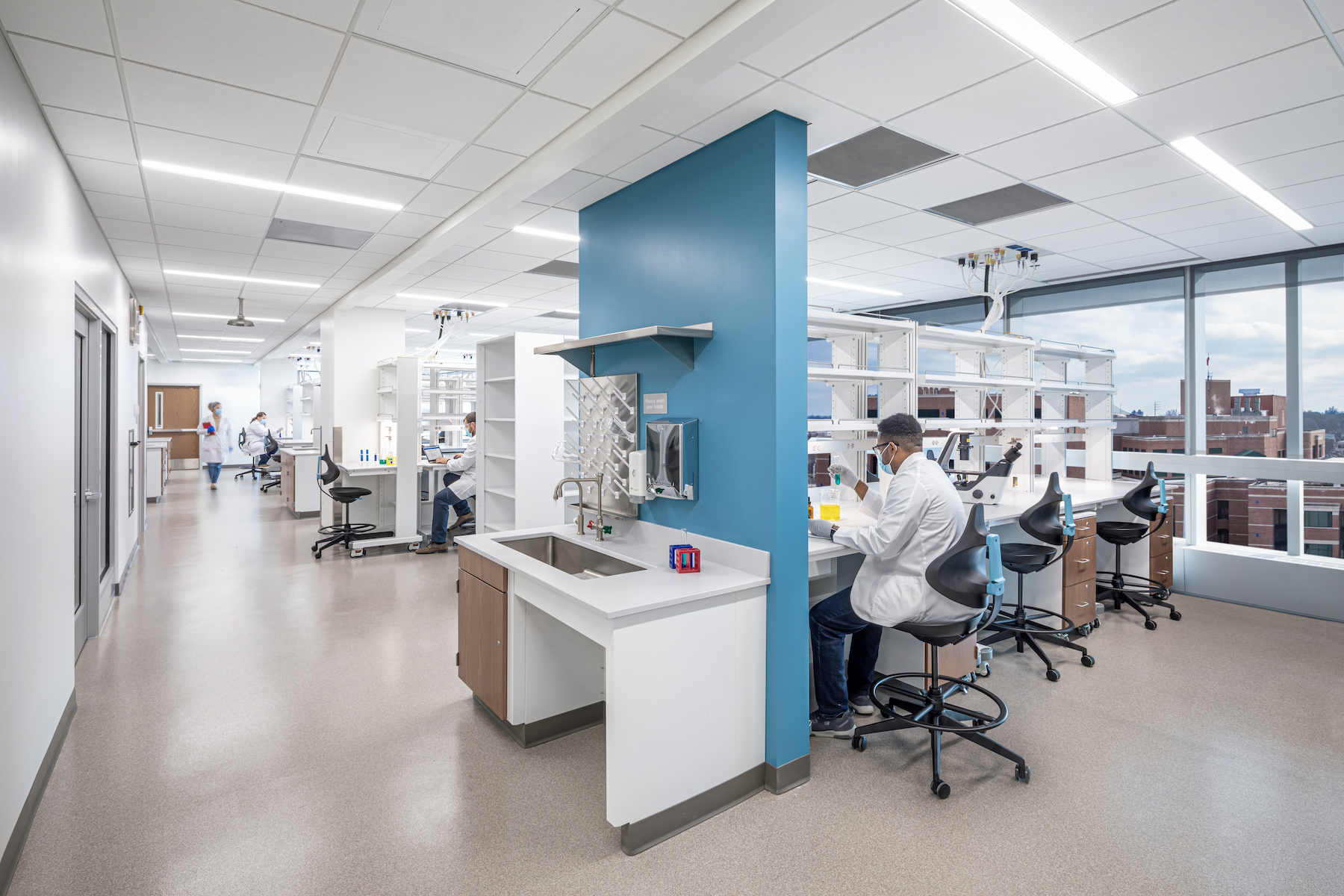
“Functionality is most in demand for life science buildings that need to serve both R&D and business purposes, so providing a mix of modern lab facilities and flexible office space is crucial,” says Chris Bilotto, RMR’s Senior Vice President. Other in-demand features include connection to the outdoors, and food amenities.
Skanska anticipates an uptick in adaptive reuse for S+T projects, too, but this will vary by region and mostly depend on the relative availability of land. When it comes to design changes, Skanska has seen the greatest shifts among its higher ed clients. It recently completed labs for North Carolina State University, Duke University, and a private company in Durham, N.C. “Three different clients with three different designers, and in all three, we saw an increase in the size of the lab benches and the addition of cubicle dividers on the bench offices to support social distancing,” says Peele.
During renovations, it’s not uncommon for tenants’ employees to continue working in the building. AEC firms say they regularly confer with those workers about logistics. The firms also proactively seek occupant input about their projects’ parameters.
Communicating with people who will be using the building “is the heart and soul of our programming and planning,” says Jeffery Talka, AIA, LEED AP, Science + Technology Practice Leader for SLAM. He explains that end users establish area requirements, quality of space, engineering controls, equipment needs, cultural relationships, and safety measures.
“Good science is not just about coordinating utilities and meeting technical demands,” says P&W’s Cordes. “The right environments can attract and retain top talent, support collaboration and innovation, and help improve speed to market.”
The input from end users might be what’s spurred the interest among developers and AEC teams in computational fluid dynamics that optimizes a building’s airflow and personnel comfort. It also goes without saying the conversations with occupants have led to the emphasis on visibility for the interior design of S+T projects.
“Space is a social system,” says Tom Simister, AIA, LEED AP, Payette’s Director of Space Strategies. “The whole point of investing in a science or technology building is to bring people together with specific resources to solve problems. Visibility makes that interaction intuitive and effortless, and enables buildings to showcase innovation and inspire a new generation of scientists.”
Visibility has included minimizing storage above workbenches. Daniel Lacy, Vice President of McCownGordon’s Healthcare and S+T Business Unit, says visibility is also manifested in clients’ requests for “critical” natural light, and for providing the public with opportunities to view a facility’s inner workings. Vanderweil Engineers has been incorporating visual mechanical rooms and interactive control/sustainability data boards into its S+T projects.
Several sources contacted for this article have seen S+T owners move toward digital technologies like artificial intelligence (AI). Skanska’s Peele says AI is improving the operation of clinical trials and enabling remote participation. “Our pharmaceutical clients are also using AI to find sequences and patterns that took much longer to run before.”
P&W’s Cordes observes that as production related to cell and gene therapies becomes more modular and accelerated, AI and automated processes are prevalent. “Some clients have set goals of 100% automation by the end of 2025.”
Related Stories
Giants 400 | Aug 22, 2022
Top 55 Laboratory Facility Engineering + EA Firms for 2022
Jacobs, Affiliated Engineers Inc., Burns & McDonnell, and WSP top the ranking of the nation's largest science and technology (S+T) laboratory facility engineering and engineering/architecture (EA) firms, as reported in Building Design+Construction's 2022 Giants 400 Report.
Giants 400 | Aug 22, 2022
Top 85 Laboratory Facility Architecture + AE Firms for 2022
Flad Architects, HDR, DGA, and Payette top the ranking of the nation's largest science and technology (S+T) laboratory facility architecture and architecture/engineering (AE) firms, as reported in Building Design+Construction's 2022 Giants 400 Report.
Giants 400 | Aug 22, 2022
Top 90 Construction Management Firms for 2022
CBRE, Alfa Tech, Jacobs, and Hill International head the rankings of the nation's largest construction management (as agent) and program/project management firms for nonresidential and multifamily buildings work, as reported in Building Design+Construction's 2022 Giants 400 Report.
Giants 400 | Aug 22, 2022
Top 200 Contractors for 2022
Turner Construction, STO Building Group, Whiting-Turner, and DPR Construction top the ranking of the nation's largest general contractors, CM at risk firms, and design-builders for nonresidential buildings and multifamily buildings work, as reported in Building Design+Construction's 2022 Giants 400 Report.
Giants 400 | Aug 22, 2022
Top 45 Engineering Architecture Firms for 2022
Jacobs, AECOM, WSP, and Burns & McDonnell top the rankings of the nation's largest engineering architecture (EA) firms for nonresidential buildings and multifamily buildings work, as reported in Building Design+Construction's 2022 Giants 400 Report.
Giants 400 | Aug 19, 2022
2022 Giants 400 Report: Tracking the nation's largest architecture, engineering, and construction firms
Now 46 years running, Building Design+Construction's 2022 Giants 400 Report rankings the largest architecture, engineering, and construction firms in the U.S. This year a record 519 AEC firms participated in BD+C's Giants 400 report. The final report includes more than 130 rankings across 25 building sectors and specialty categories.
| Aug 8, 2022
Mass timber and net zero design for higher education and lab buildings
When sourced from sustainably managed forests, the use of wood as a replacement for concrete and steel on larger scale construction projects has myriad economic and environmental benefits that have been thoroughly outlined in everything from academic journals to the pages of Newsweek.
Laboratories | Jul 17, 2022
Renovation is filling the need for life sciences lab space
Three experts from the firm DiMella Shaffer discuss the advantages and challenges of converting existing buildings.
Laboratories | Jun 29, 2022
The "collaboratory" brings digital innovation to the classroom
The Collaboratory—a mix of collaboration and laboratory—is a networking center being designed at the University of Denver’s College of Business.
Museums | Jun 28, 2022
The California Science Center breaks grounds on its Air and Space Center
The California Science Center—a hands-on science center in Los Angeles—recently broke ground on its Samuel Oschin Air and Space Center.


